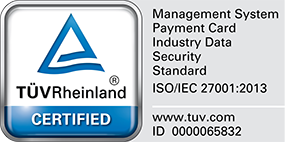In order to always have your business’ products on your customers’ minds in ways that generate good results, you need a strategy. In marketing, this strategy is called Brand Positioning–creating the position your brand occupies in the eyes of customers. What do you need to do to create a good brand positioning? What positioning strategy is right for your product? In this article, we’ll discuss the definitions, examples, and strategies for creating the right brand positioning for your business.
What is brand positioning?
Brand positioning is the action taken by a company or business owner–it can range from product design to marketing strategies, and more–to create a certain impression of (i.e. “position”) their brand in the minds of consumers.
Taglines and logos alone will not be enough to make customers understand what your product is. Therefore, you also have to think about how you want your product to be known to the public and how your product can stand out from other similar competitors.
To achieve this, you need a strong brand positioning that help your product stick in the minds and perceptions of consumers.
One of the first steps you can take is to find out what are the unique qualities of your product that sets your brand apart from competitors with similar products, or create significant value for your customers. After that, you can start marketing your product to customers based its uniqueness and value.
Benefits of brand positioning for your business
Brand positioning helps you in formulating and strategizing your marketing activities, which will in turn contribute towards revenue/sales. By having a strong brand positioning, you can develop the right marketing strategy to increase sales and reach new markets.
The following are a few benefits of brand positioning for your business:
- Helps you identify your brand
A company’s brand is an identity. It’s important to look for your brand’s uniqueness so that you can get the attention of potential buyers. Brand positioning helps you explain what your product is like, what makes your product different from competitors’ products, and explains to customers why your product is the best for them.
- Increases sales
The main purpose of having a brand positioning is to eventually increase sales. With a good brand identity, offerings that are more relevant and in line with potential customers’ needs, and effective communication that resonates with your target audience, your company will be able to enjoy increased sales and access to new markets.
- Helps create a pricing strategy
A strong brand positioning helps you differentiate your product from your competitors’, communicate the value your product brings to customers, and can therefore help you to justify higher pricing. With a good brand positioning in place, you can create the right pricing strategy–a good balance between what customers are willing to pay and what can maximizes the results on your company’s bottom line.
How to create a brand positioning strategy
After knowing that brand positioning is, and its benefits in placing your products in the minds of consumers, now’s the time to formulate your own brand positioning.
Simply put, to determine the brand positioning of the product, you must first know the product you are selling very well–the type of product, the production methods, distribution plans, and more.
The next step is determining your unique selling proposition (USP)–this is how you differentiate your product from competitors’ products. One easy way to start find your USP is by thinking through your product specification.
As an example, consider that you’re selling pizzas–a popular food that almost everyone knows for sure. But you’re adding something different to your pizzas–for example, Indonesian condiments such as rendang. This sets your pizzas apart from your competitors’ and can be considered part of your USP.
When you market this product, your customers can easily know and remember that yours is a pizza brand with a unique attribute that gives them a unique experience that they enjoy.
For a more comprehensive take, digital marketing practitioner Sujan Patel has put together a few steps you can take to create a good brand positioning strategy for your business. Here’s a summary of it:
- Know your current brand positioning
You should know what your current positioning is in the eyes of your customers, so you’ll be able to perform a meaningful analysis. From there, you can define your vision, mission, values, and how you differentiate yourself from your competitors.
- Identify your competitors and perform competitor research
You can perform simple research about your competitor, analyzing their products, their weaknesses and strengths, their marketing strategies, as well as how they are currently positioned/perceived in the eyes of the consumers.
- Identify your USP and create a positioning framework
To position your brand properly, you need to know what makes your brand stand out for your target customers. You need to find out what are the advantages your brand has that makes you more effective for your customers, compared to your competitors. After that, you can start crafting your positioning framework, where you develop things like mission statement, tone of voice, elevator pitch, message pillars, and sample touchpoints based on your USP and target audience.
- Build an emotional connection with prospects and customers
Build a positive sales experience for your prospects. Before going for the hard sell, build trust with your prospects by learning more about them and understanding the problem they are trying to solve. Furthermore, you should make sure that all your customer-facing employees, being ambassadors of your brand, represent your brand well.
Brand positioning examples
To better illustrate what brand positioning is and help you understand it better, we have put together some brand positioning examples from companies that you are likely to be familiar with.
Indomaret vs Alfamart
With these being two of the largest retailers in Indonesia, you are probably already familiar with them, whether it’s because their outlets are always close together, or simply because of their locations, which are always strategic. While they can appear to be pretty similar companies on the surface, behind all these similarities, it turns out that there are quite a bit of differences in the brand positioning they adopt.
From the beginning, Indomaret had put forward the concept of “you don’t have to travel far to go shopping”, positioning itself as a minimarket that brings consumers closer to their needs at home, at work, and more. On the other hand, Alfamart uses the concept of “a satisfying shopping experience at the right price” as a community store that provides daily basic needs at affordable prices, in convenient locations, and with a friendly service.
From these differences, we can see that Indomaret emphasizes ease of shopping and proximity to consumers, whereas Alfamart focuses on providing a satisfying in-store shopping experience for customers while they are looking to fulfill their daily necessities.
Kopi Kenangan vs Janji Jiwa
With Indonesia being one of the largest coffee-producing countries in the world, there are various coffee chains that are popular with Indonesians. Two of these are Kopi Kenangan and Janji Jiwa.
Kopi Kenangan builds its image as a popular coffee drink sold at an affordable price but with a high quality. With this image, Kopi Kenangan’s popularity continued to skyrocket and it eventually became the first unicorn startup in Indonesia from the food and beverage industry.
On the other hand, the Janji Jiwa chain has the concept of “coffee from the heart” which promises consistent coffee taste and experience across its 900 outlets throughout Indonesia. This can be seen through the many variants of the beverages it created. With this concept, Janji Jiwa won an award as the Top Brand Award Coffee Cafe 2020 – 2022 and an award from MURI as the fastest growing coffee chain of the year. Not only that, Janji Jiwa is now also expanding its business to Jiwa Toast – a creative toast chain which is also gaining popularity in Indonesia.
From the differences above, we can conclude that Kopi Kenangan emphasizes more on affordable prices while maintaining quality, whereas Janji Jiwa emphasizes taste and a pleasant coffee drinking experience. Although they focus on different concepts, each of them are clear in communicating their respective positioning to their target audience.
Google Meet vs Zoom
When the pandemic hit in early 2020, workers and students had to make major changes to their activities because they could no longer meet face to face. To mitigate this, people turned to video-conferencing solutions. Google Meet and Zoom were two of the most popular ones. Even though they are very similar solutions with similar objectives, Google Meet and Zoom positioned themselves differently.
Zoom positioned itself as a solution for conducting meetings from home through video conferencing, and as such helps professionals to still be able to work from home. Meanwhile, Google Meet positioned itself as an interactive means to socialize with family and friends while they could not meet face to face.
Through this difference in positioning, we can see that each brand is addressing different target segments within the market, despite similarities in their product functions.
Brand positioning pitfalls and common mistakes
In determining brand positioning, you must also pay attention to other things that can lead to errors that can affect customers’ perception of your brand and consequently sales. Here are a few common mistakes in formulating brand positioning.
- Unsuitable brand positioning
If you can’t convey your message well, potential customers will find it difficult to distinguish your product from others. Some examples of such errors are:
- Over-positioning: Differentiating and emphasizing the positioning too much, such that the brand only appeals to too small a target segment
- Under-positioning: Not being clear enough such that prospective customers what the benefits are to them
- Confused positioning: Inconsistent positioning efforts such that customers are confused about what the brand’s image is
- Prioritizing messaging over business strategy
Although band positioning and messaging are closely related, the right business strategy needs to be in place first. Blair Enns, a marketing practitioner, explained that positioning is not an exercise to find new ways to explain what the company already does currently. Instead, companies must first arrive on the business strategy, before trying to position the brand in customers’ minds and coming up ways to do that.
- Focused more on brand building than building the company as a whole
The purpose of having a brand positioning is to show that your company gives more value than your competitors. To do that, you have to make sure that your company does have the skills to back your claims. So, don’t be so busy building a brand that you forget to make sure that your company is competent in doing what you have stated through your positioning.
- Focusing on the market rather than your target audience
It may feel tempting to fulfill the needs of an existing market instead of focusing specifically on your business goals or objectives. However, by focusing on your target market, you will gain access to more potential customers who are better suited to the products you offer and have the potential to help you become better known in that specific target market.
Types of brand positioning strategies
A positioning strategy is how you can determine what kind of positioning is suitable for your business. Here are 7 strategies you can use to determine the right brand positioning that will help you stand out from competition.
- Product Attributes
One positioning strategy you can consider is to position the product by paying attention to the distinctive attributes in the packaging, symbols, sizes, colors, and so on. Product attributes that evoke certain emotions in the minds of customers can help you formulate your brand positioning in certain ways.
For example, in the digital era, many people express themselves in the form of uploads, social media posts, etc. If the product has a unique, attractive appearance, and leaves a strong impression on the minds of customers, they will not hesitate to upload it or recommend it to friends and family. This is something that can be leveraged for a marketing strategy that can be quite effective for certain market segments.
- Product Benefts
There are usually multiple products in the market with similar functions. However, there could be some difference in benefits that can be leveraged on for a better brand positioning.
For example, medicine from brand A claims to be able to relief headaches quickly and safely. Brand B also claims the same thing, but better–it does so without causing drowsiness.
From the above example, we can see that both products medicines to relief headaches, but one has the advantage that the brand capitalizes on for its brand positioning. This strategy can help your product stand out, even though there are already similar products in the market.
- Price-based
This is a strategy where you position your product as the most affordable one in the market. This is the easiest way to gain market share because most people wouldn’t want to pay more if they can get the same functionalities at a lower price.
However, by using the positioning strategy, you may encounter challenges such as customers perceiving your products as having lower quality, or simply finding it difficult to keep up with offering low prices amidst inflation. This positioning can also open your brand to a price war, where competitors try to undercut each others’ prices, leading to a race to the bottom.
- Quality-based
Not every customer is always finding products with the lowest price. On the other end of the spectrum are those who evaluate products they buy based on their quality. You can address such customers by formulating your brand positioning strategy to emphasize on quality, justifying the premium cost that comes with it.
You can show the quality of your products through various aspects such as exceptional quality of your raw materials, the experienced craftsmanship of the artisans you employ, lifetime warranties, excellent customer service, and more.
The budget-conscious crowds will surely shy away from such brands, so it’s important that you analyze your buyer persona well to determine whether or not this will work for your business, and which customers you should focus on with this strategy.
- Brand Ambassador
Another way is to position your brand in a way that associates it with prominent figures that your target audience look up to, such as celebrities, high-achieving athletes, etc. Choose the right individual who can clearly represent the product.
For example, if you sell energy drinks, you could engage high-achieving professional athletes as your brand ambassador and to star in your ads. If the product you’re selling is a beauty product, you might consider engaging up-and-coming popular artistes, and so on.
- Competitor-based
This strategy is usually done by positioning your product as better than the main competitor’s product. A familiar example of this positioning strategy can be seen between two smartphone competitors, Apple and Samsung.
Both companies often publish controversial advertisements satirizing their competitors’ products. For example, recently, Samsung featured the tagline “this innovation is not coming soon to an iPhone near you” in this promotional video they made.
Things like this are done to show that competitors’ products are not better than their own products.
- Product category
This strategy seeks to position a brand as a market leader within a particular product category. Usually business models that use this strategy places a strong focus on one brand even though they actually own several other brands within the product category.
For example, Indofood is more focused on developing the Indomie brand although it actually owns several other instant noodle brands such as Supermie, Sarimi, Sakura, and many more.
With its dominance and huge market capitalization, it is not surprising that many of us automatically think of the Indomie brand when it comes to instant noodles.
Brand positioning tips
In addition to trying out the strategies we discussed in the previous section, you may also want to check out some brand positioning tips before you begin.
- Be unique
Be it in terms of packaging, features, or benefits offered, don’t be easily tempted to simply follow the market’s wants for more of the same. You can still enter the market, but your brand should have a uniqueness that your competitors do not have.
- Be relevant
No matter how unique your product is, it will be difficult to find a good market for it if your product is not relevant to customers. Make sure the differentiation that your brand has meets the interests and needs of your customers so that they will be interested in buying what you are selling.
- Be consistent
When it’s necessary, you can tweak the positioning that you have, but you need to make sure that it remains in line with your business strategy. Otherwise, if you keep changing your positioning, customers will be confused. They will not be able to understand what your brand positioning is.
- Be credible
Overselling or excessive marketing will not provide benefits for your business. Therefore, in your marketing activities, it’s important to convince customers in a logical manner so that your brand remains credible.
Building an effective brand positioning statement
A brand positioning statement is usually used internally in the company. It’s a one- or two-sentence statement or declaration that describes your brand’s unique value to your customers vis-a-vis your main competitors. Your brand positioning statement serves as a guide so that each team and team member has the same perception of the brand positioning. This helps in planning, executing, and evaluating the brand positioning that you have created.
In other words, the positioning statement is a reference for everyone in the company to take actions that can influence customer perceptions of the company’s brand.
There are 4 elements you need to have in your brand positioning statement:
- Your target customers
You can perform market research to determine what your target customers are like–what they like, what is their age range, what attitudes or opinions they have, as well as other information that could be useful. If you have more than one target audience, you should focus on your main target audience, most likely your most valuable customer segment.
- Your market definition
You need to know the market you want to capture. What product category/industry vertical is your brand competing in? What is the context in which your brand is relevant to your target customers? There may be overlaps and sub-segments within your industry, so you should define the exact space you want to focus in
- Your brand promise
What are the most important, and compelling benefits that your brand can have for your target customers? These benefits can be emotional or rational.
- Reason to believe
How do you show your target customers that you deliver on your brand promise? What is the most compelling evidence?
You can then put together these elements to form your brand positioning statement. These are a few ways companies have put together their brand positioning statements
- For [target customers], [brand] is the [market definition] that delivers [brand promise] because only [brand] is [reason to believe] (Source)
- [Brand] is a [market definition] company that provides [target customers] with [brand promise] by [reason to believe] (Source)
After formulating your brand positioning statement, your team now has an aligned vision and should have an easier time planning marketing activities that truly move the needle.
Get more customers by providing a great payment experience
Now that you’ve learnt more about positioning your brand on the minds your target customers, it’s time for you to move to the next stage: marketing your product and gaining more customers.
To reap the results of your hard work, you should make sure that you make it easy for your customers to pay you. Providing a seamless payment experience, as well as a wide variety of payment methods that includes those your customers love and trust, can help you boost your conversion rate.
One easy way to do this is to integrate with a payment gateway, which can give you access to several payment methods with one integration. For example, Xendit, one of Indonesia’s most advanced payment gateways, enables you to accept payments via Virtual Account, QRIS, Direct Debit, PayLater, and more–with just one easy integration. Xendit is also registered with Indonesia’s Financial Services Authority (OJK), so you can be sure that all transactions are highly secure.
Sign up for a free account now to try our user-friendly dashboard and explore our various features!














